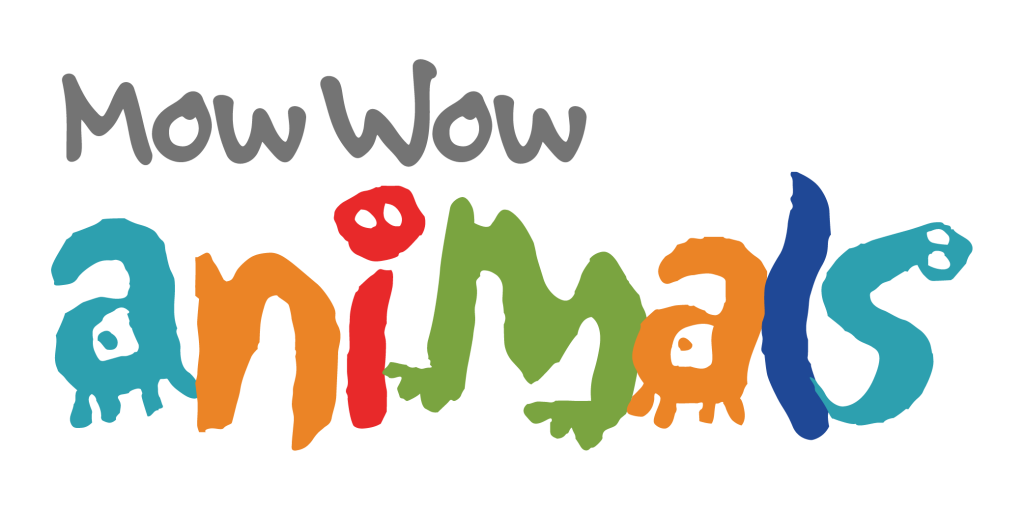
Curriculum Content Standards
The California State Board of Education (SBE) supplies curriculum content standards for K–12 in five broad subject areas: Reading–Language Arts, Social Studies, Science, Visual and Performing Arts, and Mathematics. The activities and exercises contained in the Mow Wow Animals curriculum span all five areas, dovetailing especially well with the first three of the five.
For example, California’s curriculum content standards include the following:
Social Science
K.1 Students should understand that being a good citizen involves acting in certain ways. Students are introduced to the concept of civic ideals and responsibilities.
Especially in Lessons 2 and 3 of the curriculum, students are taught to respect wildlife and to treat pets with kindness and provide them with appropriate care. They also learn about man-made and environmental hazards in their community and ways in which they can work toward making their community safe for all its inhabitants.
Reading–Language Arts
1.1 Use letters and phonetically spelled words to write about experiences, stories, people, objects, or events.
2.0 Speaking Applications (Genres and Their Characteristics). Students deliver brief recitations and oral presentations about familiar experiences or interests.
3.0 Literary Response and Analysis. Students read and respond to a wide variety of significant works of children’s literature. They distinguish between the structural features of the text and the literary terms or elements (e.g., theme, plot, setting, characters).
Many of the lesson activities incorporate elements of 2.0, and the reading and written assignments provided in all the lessons complement 1.1 and 3.0. Guided classroom discussions enable students to practice analytical and verbal skills, while written assignments promote the acquisition of grammatical and composition skills.
Science
2.0 Different types of plants and animals inhabit the earth. As a basis for understanding this concept:
a. Students know how to observe and describe similarities and differences in the appearance and behavior of plants and animals (e.g., seed-bearing plants, birds, fish, insects).
b. Students know stories sometimes give plants and animals attributes they do not really have.
c. Students know how to identify major structures of common plants and animals (e.g., stems, leaves, roots, arms, wings, legs).
Plants and animals meet their needs in different ways. As a basis for understanding this concept:
a. Students know different plants and animals inhabit different kinds of environments and have external features that help them thrive in different kinds of places.
b. Students know both plants and animals need water, animals need food, and plants need light.
c. Students know animals eat plants or other animals for food and may also use plants or even other animals for shelter and nesting.
d. Students know how to infer what animals eat from the shapes of their teeth (e.g., sharp teeth: eats meat; flat teeth: eats plants).
Plants and animals have predictable life cycles. As a basis for understanding this concept:
a. Students know that organisms reproduce offspring of their own kind and that the offspring resemble their parents and one another.
b. Students know the sequential stages of life cycles are different for different animals, such as butterflies, frogs, and mice.
c. Students know many characteristics of an organism are inherited from the parents. Some characteristics are caused or influenced by the environment.
d. Students know there is variation among individuals of one kind within a population.
In all the lessons, students learn facts about common wildlife species, domestic species, and animal behavior. Lessons 1 and 2 further address such concepts as natural habitats, ecological balance, and the interrelatedness of all life on our planet.
As an overarching goal, the Mow Wow Animals curriculum seeks to facilitate character education, as encouraged by the California Department of Education. (See section 233.5[a] of the California Education Code.) Learning stewardship of the environment and responsibility toward animals—both wildlife and pets—helps children to become good citizens and aids them in formulating a code of ethics. In addition, understanding the relationship between human beings and the natural environment is fundamental to a sense of ecological accountability. The Mow Wow Animals curriculum is intended to help students living in an urban environment overcome the challenges they often face in perceiving the links between people and the world of nature.
Back to AboutEducation Code of the
California Department of Education
Americans have long recognized the need for kindness toward animals. In acknowledgment of this need, the California Department of Education has included in its Education Code a requirement that students be taught to view animals with compassion and to grant them the same dignity they would human beings. Section 233.5(a) of the code reads in part:
Each teacher shall endeavor to impress upon the minds of the pupils the principles of morality, truth, justice, patriotism, and a true comprehension of the rights, duties, and dignity of American citizenship, and the meaning of equality and human dignity, including the promotion of harmonious relations, kindness toward domestic pets and the humane treatment of living creatures.
This farsighted code regards the humane treatment of animals as one aspect of the broader ethic of good citizenship—the responsibility of each of us toward others who live in our society, including the animals with whom we share our environment. The code also understands that when we fail to treat animals kindly and responsibly, we undermine not only their rights as living creatures but our own dignity as human beings.
